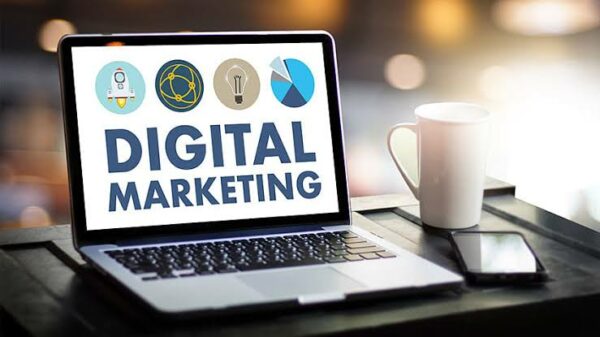Things have changed regarding the way local listings are displayed on the search results page, with Google Links being removed along with phone numbers. How this will affect rankings moving forward isn’t known yet.
Nevertheless;
- It’s still very important that you complete the Google My Business Page in full as it still has a significant impact on rankings.
- Get your business NAP info right. Your categories and business hours should be correct with relevant images in your business profile.
- And then, even though Google appears to be separating the search engine from Google+, this doesn’t mean that you should scrap your Google+ page off the internet.
So, what exactly can you do to improve the effectiveness of your Google My Business page?
Ensure That You Don’t Have Duplicate Google My Business Pages
First, locate the My Business page that you’ll be working with. Most people already have this. The problem is that knowingly or unknowingly, you may be having two or more pages which can subsequently compromise the entire local SEO campaign.
So, start by identifying your primary page, confirm then record its URL.
To confirm that there is no duplicate My Business page left, you can visit https://plus.google.com/ to check your business name on Google+.
The search will return results for all pages registered in that name. If there are duplicates, record the URL of the main page and notify Google to kill the other pages.
Verify your Page
You may not be able to use some page optimisation tools until you have verified your page.
To verify your page, first, you need to claim your business by finding the associated Google page and somewhere below your images, locate the: “Is this your business?” text. Click on this text.
Then return to your dashboard and right next to your business name, there should be a check mark with a “verified” stamp. Your business is now verified.
Otherwise, you may have to call Google to find out how you can verify the business.
You could also send Google a postcard but postcards take up to two weeks to arrive. So, you’ll need to be patient.
Attach the Business Page to the Domain Email Address
This helps to prove legitimacy.
If your business is Liza’s Coffee, then an email address such as Liza@Liza’sCoffee.com is what you need. It shows that you actually own the business.
More importantly, rather than use Yahoo or Gmail email addresses, get your own domain name.
Check Your Business Name and Address
Ensure that your Google My Business name reflects your real-world business name. This consistency is very important. You can always change the name on the dashboard.
The address too is crucial.
Your address must be accurate and similar to your local address. Remember that P. O. Boxes aren’t acceptable on Google My Business.
Simply put your physical address in address line 1 and the mailing address in address line 2.
The Business Contact
The phone number you use for Google My Business should be genuine. But even more importantly, it should be a local phone number associated with your local office location.
800 toll-free numbers aren’t welcome on Google My Business.
List Your Business Category Appropriately
Listing your business in the wrong category can be detrimental to your local SEO campaign. Use only the categories that suit your business.
You can use the Blumenthal’s Business category tool or Moz Local Categories to find your ideal business category.
Correct Business Hours
If you open your business from 8 am to 6 pm daily from Monday to Saturday, list that on your Google My Business page.
If your times change seasonally, you should also remember to come back and adjust the listings as necessary.
Create a Business Intro
The intro essentially tells users your business location, service offered and a little background info.
So, a simple intro (150-300 words) should include the business name, your business category, and the location.
If possible, place two or three hyperlinks to different pages of your website if you offer multiple services to help users quickly reach those in-demand pages without navigating through the entire website.
Ensure that your Photos are Uploaded Correctly
In Google My Business, you are allowed to upload several categories of photos.
The first and most important category is your identity photos that include a profile photo, a logo photo, and a cover photo. The three appear in that order from left to right.
Use an effective photo that powers up your communication and boost engagement.
Moreover, your cover photo should take advantage of every chance to put your business in the best possible light. Ensure it’s large enough to support a full-screen view.
Create a Virtual Tour
While virtual tours aren’t a must-have, they add so much glamour to your page.
Grab your customer’s’ attention with quality images and they’ll be more than happy to take a tour of some pictures capturing your business at its best.
The only downside… it will cost you some bucks.
However, Google advocates for virtual tour making it a worthy consideration. Lastly, get a professional photographer to take the photos that will pack a serious punch when it comes to capturing your audience’s attention.
You’ve now Optimsed Your Google My Business page, it’s Time to Dive Into On-Page Optimisation
On-page optimisation refers to all optimisation efforts that are done on the website pages.
It’s different from off-page optimisation where you try to influence a website’s ranking by optimising aspects that are not found on the web pages.
Here are nine powerful strategies to set and archive you’re your on-page optimisation goals for the rest of your life!
Master Google Webmaster and Google Analytics Tools
Why do you need to start with Google webmaster and analytics?
Because that’s where SEO starts.
If you can master the webmaster and the analytics tools upfront, then you’ll save a lot of energy going forward.
There is a lot of information littered on these two that becomes incredibly important down the line.
Webmaster tools will help you determine whether your website is indexed properly on Google. Sometimes improper indexing can attract severe penalty. The webmaster tools will also help you determine if there are crawl errors.
Lastly, of late, Google webmaster tools have also been upgraded such that they can be used to see certain aspects of keywords that can’t be seen using analytics.
Revisit your Site Structure
After you’re done with webmaster and analytics, the next stop should be your site structure. Some of the main factors to keep in mind here include the number of business locations you want to feature on the site and whether you want a separate page for each service and/or business offer.
Also, do you want to list multiple cities/locations under the same keywords?
If you only want to highlight one location, have the homepage as the information hub with subpages for each service.
However, where there are multiple locations, then you must optimise all location landing pages and URLs. Always draw a diagram of your site structure.
Include the Correct Name, Address, and Phone (NAP) on your Website and Landing Pages
Just like with your Google My Business pages, you also need to ensure that the NAP on your landing pages is correct.
Keep the business name short and simple.
Don’t include any additional keywords.
Double check the address and go for a local phone number. Everything in the NAP should match whatever you used in Google My Business pages.
Title and Meta Optimisation
Forgetting to optimise the title and meta description is a very common mistake with austere penalties – especially in local SEO.
Your title tag must have the name of your city and state, and your keywords without looking spammy.
The same applies to the meta description.
Optimise the Header Tags
Whatever titles you choose to use, making sure that they are optimised adds value to your localisation efforts. This applies to all titles; H1, H2, H3, and so on.
It’s good practice that the H1 contains the name of your city and state plus your keywords. But then again, do it without Google suspecting you’re spamming. More importantly, always stick to just one H1 per document.
Invest in Unique Landing Page Content
Unlike in the past where SEO thrived off keywords most of the time, today’s web visitors are very concerned about the quality of content around those keywords.
And it has forced Google to look closer into the quality of web content.
This doesn’t mean that keywords have become less important.
But you need to invest more in creating better content for your web pages. Use the content to grab user’s attention, spark engagement and sets your website above thousands of competitors across the Web today
Also, within the content, use calls to action (CTA) to make your visitors jump at your opportunities to boost sales.
Always Display your Business Hours Clearly
A Google study shows that 54% of people who search products online will always try to find out the company’s business hours.
If you don’t include your business hours, you may miss out on these potential customers.
While including your business hours, ensure that you display it clearly in an easily viewable location. Don’t make users navigate half the website looking for this information.
Genuine Reviews and Customer Testimonials
Several studies show that online shoppers trust peer reviews more than anything.
So, the more testimonials you show them, the better the chances that they will choose to do business with you.
The difference between reviews and testimonials is that reviews can also be found on other dedicated websites while testimonials are only funding on the seller’s website.
There are plenty of review websites out there such as Yelp and Angie’s List where people can say good or bad things about you. Always check these websites to track your reputation.
Optimise your Website for Mobile Use
Today, a lot of searches (more than 54%) are being done on mobile.
A number of purchases are also being completed on mobile. This means that you can no longer ignore mobile optimisation.
To this end, you must consider responsive design so that all your pages are optimised for mobile.
This way, a user doesn’t have to see broken images on their screen just because the screen is too small to hold your large images.
There are two options when doing mobile optimisation;
- Redesign your website to make it mobile friendly.
- Design a separate mobile website.
Conclusion
Today, most successful online business professionals are investing heavily in various local SEO strategies.
For beginners, appearing at the top of your local search is not a magic or unusual; it’s an endeavor that demands for the effective strategies, right tools, and time to pull through.
That is to say, your local SEO success won’t come immediately neither will it germinate miraculously without a directed effort.
Indeed, the online business marketers who effectively adopt and implement the above strategies in their process stands to dominate tenfold their competitors who ignore the power of local SEO!
Cameron Francis is the Co-Founder and Managing Director of ETRAFFIC, Melbourne's 1 Creative Agency and Digital Marketing Company. He is passionate about helping businesses of all sizes improve their online visibility.

1 Comment
Leave a Reply
Cancel reply
Leave a Reply
This site uses Akismet to reduce spam. Learn how your comment data is processed.
























































































































































































Amit
August 2, 2017 at 7:41 am
Well explained…. Nice article.